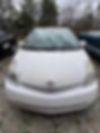💸 Do you have examples of bad vehicles?
- This $31,000 Porsche Panamera Scam Was Drowned And Rolled BackDoes the water actually smell? Another example of a really bad deal.
- 2016 BMW i8 For $35,000: Scam or Score?This luxury BMW has changed not only its color but also odometer value.
- This Nissan Armada Just Keeps Getting Younger...Or Does It?Bought wrecked for $725 with 202k miles, on salvage auction again with 150k miles.
- Title Washing Maserati MoneypitSalvage Grand Turismo with odometer rolled back several times within a few years.
- 2014 JEEP WRANGLERSalvage title with blown airbags. Fully fixed with suspicious odometer.
- 2005 TOYOTA TACOMABought for $4k with 279k miles, cleaned, and on sale for $7k with 96k miles.
- 2005 DODGE MAGNUMTwo salvage auctions within a year. Odometer changed from 232k mi to 118k mi.
- 2005 BMW X3Salvaged several times within a year. Odometer rolled back after the accident.
- 2015 HONDA CROSSTOUROdometer was potentially rolled back from 78k mi to 36k mi.
- 2014 PORSCHE CAYENNE
- 2016 NISSAN SENTRA
All info from Basic Report
Full list of events (better than CARFAX)
Odometer readings from DMV
Save up to $65 on CARFAX and AutoCheck
100% satisfaction guarantee
2 sale reports from different sources
Many actual photos
Odometer readings from sales
Bids and final prices
Real sale descriptions
Not enough reasons to want it? Try to click here.
Why BADVIN is better than other VIN reports?
We give you not only record like a car was at some auction on some date, we give you exact price how much it was sold for, we show you pictures that were used on that auction. So will be able to see how car looked some time ago.
Also we include all events for this VIN, so you will get most of following information:
- Vehicle Specifications
- Title Records and Title Checks
- Junk, Salvage
- Lien, Impound and Theft Records
- Insurance Records
- Owner History, Registered State
- Many other important records
We guarantee that our events list contains all information you need to make a decision about buying the car. If you find our Premium Report not sufficient enough, MONEY BACK GUARANTEED.
Would like to see some examples before purchase? Click here.
- This $31,000 Porsche Panamera Scam Was Drowned And Rolled BackDoes the water actually smell? Another example of a really bad deal.
- 2016 BMW i8 For $35,000: Scam or Score?This luxury BMW has changed not only its color but also odometer value.
- This Nissan Armada Just Keeps Getting Younger...Or Does It?Bought wrecked for $725 with 202k miles, on salvage auction again with 150k miles.
- Title Washing Maserati MoneypitSalvage Grand Turismo with odometer rolled back several times within a few years.
- 2014 JEEP WRANGLERSalvage title with blown airbags. Fully fixed with suspicious odometer.
- 2005 TOYOTA TACOMABought for $4k with 279k miles, cleaned, and on sale for $7k with 96k miles.
- 2005 DODGE MAGNUMTwo salvage auctions within a year. Odometer changed from 232k mi to 118k mi.
- 2005 BMW X3Salvaged several times within a year. Odometer rolled back after the accident.
- 2015 HONDA CROSSTOUROdometer was potentially rolled back from 78k mi to 36k mi.
- 2014 PORSCHE CAYENNE
- 2016 NISSAN SENTRA
If you want to get full information about the car, your best option is Premium Report for $5.99+.
If you need only sale information, your best choice is Basic Report. You won't get detailed list of events but you will get all photos and other data from all sales that we have for this vehicle. Basic reports available only for dealer membership.
Summary for VIN JTDKARFU8G3500789
| Make | TOYOTA |
| Model | PRIUS |
VIN Decoder — 36 records
A TPMS is an electronic system designed to monitor the air pressure inside the pneumatic tires on various types of vehicles. TPMS can be divided into two different types - direct and indirect. Direct TPMS employ pressure sensors on each wheel, either internal or external. The sensors physically measure the tire pressure in each tire and report it to the vehicle's instrument cluster or a corresponding monitor. Indirect TPMS does not use physical pressure sensors but measure air pressures by monitoring individual wheel rotational speeds and other signals available outside of the tire itself.
Engine displacement (in cubic centimeters) is the volume swept by all the pistons inside the cylinders of a reciprocating engine in a single movement from top dead center to bottom dead center.
Engine displacement (in cubic inches) is the volume swept by all the pistons inside the cylinders of a reciprocating engine in a single movement from top dead center to bottom dead center.
Engine displacement (in liters) is the volume swept by all the pistons inside the cylinders of a reciprocating engine in a single movement from top dead center to bottom dead center.
Electrification level defines to what level the vehicle is powered by electric system. The common electric system configurations are mild hybrid, strong hybrid, plug-in hybrid, battery electric, and fuel cell vehicles.
(1) Mild hybrid is the system such as 12-volt start-stop or 48-volt belt integrator starter generator (BISG) system that uses an electric motor to add assisting power to the internal combustion engine. The system has features such as stop-start, power assist, and mild level of generative braking features.
(2) Strong hybrid systems, in vehicles such as the Toyota Prius, mainly consist of motors, conventional gasoline engine, and battery, but the source of electrical charge for the battery power is provided by the conventional engine and/or regenerative braking.
(3) Plug-in hybrid systems, in vehicles such as the Toyota Rav4 Prime, mainly consist of motors, conventional gasoline engine and battery. Plug-in hybrid vehicles are like strong hybrids, but they have a larger battery pack and can be charged with an external source of electricity by electric vehicle supply equipment (EVSE).
(4) Battery electric vehicles (BEV), such as the Tesla Model S or Nissan Leaf, have only a battery and electrical motor components and use electricity as the only power source.
(5) Fuel cell electric vehicles (FCEV) use full electric drive platforms but consume electricity generated by onboard fuel cells and hydrogen fuel.
Engine brake is the horsepower (hp) at the engine output shaft. Engine Brake (hp) From is the lower value of the range.
Engine configuration defines how engine cylinders are arranged. Common values are V6 for V-shaped arrangement, I4 or L4 for in-line arrangement.
This is a numerical field to store the number of cylinders in an engine. Common values for passenger cars are 4 or 6.
Fuel type defines the fuel used to power the vehicle. For vehicles that have two power sources, such as plug-in hybrid vehicle, both primary fuel type and secondary fuel type will be provided.
Body Class presents the body type based on 49 CFR 565.12(b): "Body type means the general configuration or shape of a vehicle distinguished by such characteristics as the number of doors or windows, cargo-carrying features and the roofline (e.g., sedan, fastback, hatchback)." Definitions are not provided for individual body types in the regulation.
Gross vehicle weight rating (GVWR) is the maximum operating weight of a vehicle including the vehicle's chassis, body, engine, engine fluids, fuel, accessories, driver, passengers and cargo, but excluding that of the trailers. Per 49 CFR 565.15, Class 1 is further broken down to Class A-D; Class 2 is further broken down to Class E-H. This field captures the lower bound of GVWR range for the vehicle.
Gross vehicle weight rating (GVWR) is the maximum operating weight of a vehicle including the vehicle's chassis, body, engine, engine fluids, fuel, accessories, driver, passengers and cargo, but excluding that of the trailers. Per 49 CFR 565.15, Class 1 is further broken down to Class A-D; Class 2 is further broken down to Class E-H. This field captures the higher bound of GVWR range for the vehicle.
Per 49 CFR 565, Model means a name that a manufacturer applies to a family of vehicles of the same type, make, line, series and body type.
If the model year (MY) is supplied when the VIN is decoded, such as from a crash report or a vehicle registration record, the MY value will be the supplied MY, even if the MY decoded from the VIN differs from the supplied MY. If the MY is not supplied when the VIN is decoded, the MY value will be decoded from the 10th character in the VIN.
This data element captures the city of the manufacturing plant where the manufacturer affixes the VIN.
This data element captures the name of the company that owns the manufacturing plant where the manufacturer affixes the VIN.
This data element captures the country of the manufacturing plant where the manufacturer affixes the VIN.
This data element captures the State or Province name within the Plant Country of the manufacturing plant where the manufacturer affixes the VIN.
Per 49 CFR 565, Series means a name that a manufacturer applies to a subdivision of a "line" denoting price, size or weight identification and that is used by the manufacturer for marketing purposes.
This field captures the location of curtain air bags. Curtain air bags are side air bags that protect the head.
This field captures the location of frontal air bags. Frontal air bags are generally designed to deploy in "moderate to severe" frontal or near-frontal crashes.
This field captures the location of knee air bags, which deploy from a car's lower dashboard, are meant to distribute impact forces on an occupant's legs in the case of a crash, thereby reducing leg injuries.
BADVIN Premium Report

Sale Record — 5 years ago in Ridgefield, NJ, 07657
2528
| Year | 2016 |
| Title | Hidden text |
| ODO | 1918 mi |
| Condition | Hidden text |
| Seller | Hidden text (Hidden text) |
| Buy Now Price | $3470 |
| Location | Ridgefield, NJ, 07657 |
| Date | ended 5 years ago |
| Sale Website Type | classifieds |
| Notes | |
| Hidden text | |
























